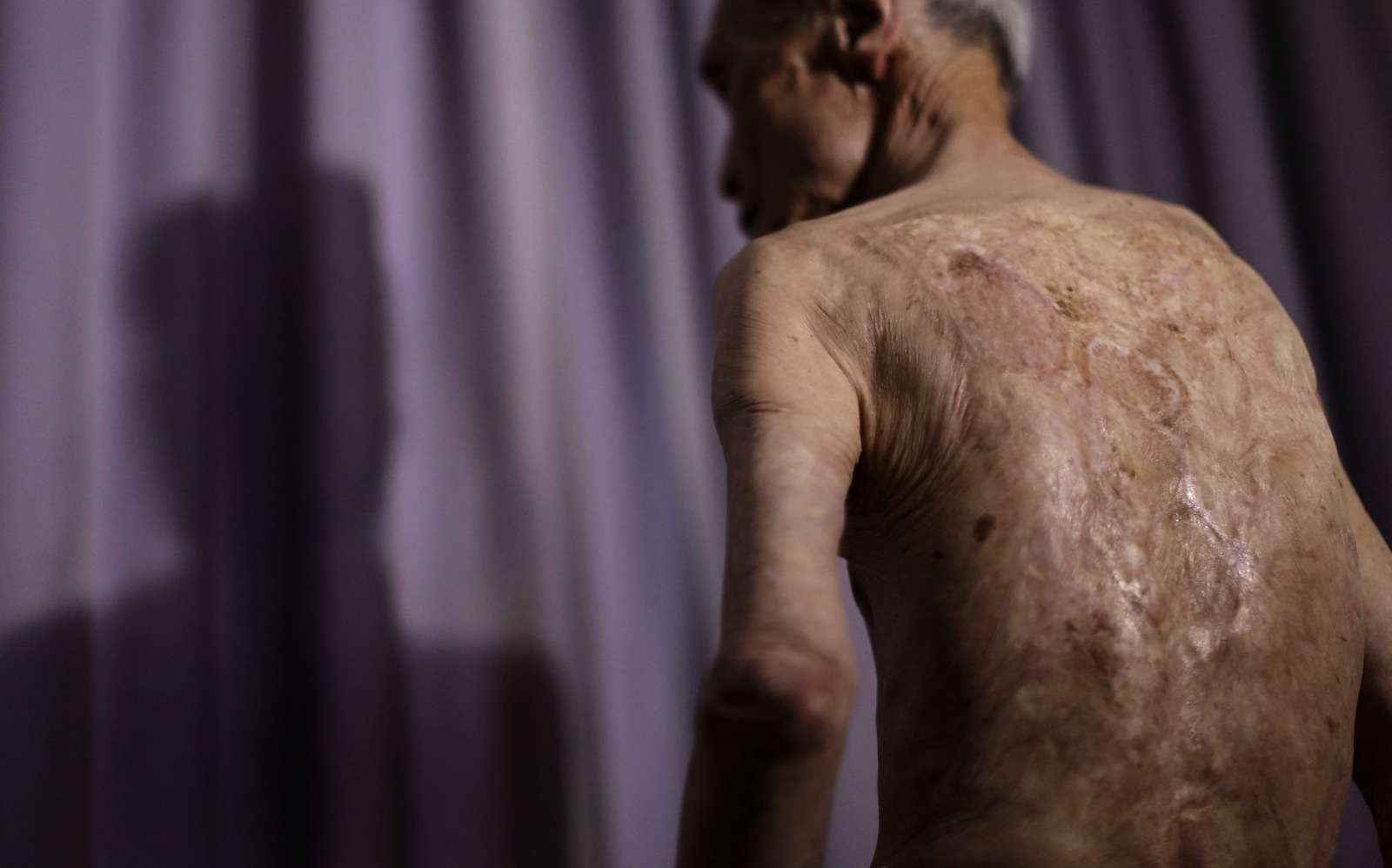TOKYO – The Japanese government is promising to pursue a nationwide study of a nearly 50-year policy of forced sterilizations, vasectomies and abortions that sought to eliminate disabled people from society by preventing the birth of “inferior offspring.”
Known as the Eugenic Protection Law, the inhumane policy was introduced in 1948 under U.S. military occupation before coming to an end in 1996. It drew inspiration from similar legislation in Nazi Germany that hoped to manage the country’s “racial hygiene” through population quality control measures.
At least 25,000 people alleged to suffer from mental and physical illnesses, disabilities, and hereditary disorders – including “feeble-mindedness,” “remarkable criminal inclination,” “abnormal sexual desire,” and deafness – were affected by the law.
Among the victims were an estimated 16,000 to 17,000 people who were forced or deceived into undergoing surgical procedures against their will, often as a condition for treatment in psychiatric hospitals and institutions.
The government of Prime Minister Shinzo Abe’s Liberal Democratic Party-led coalition – which has ruled the country for much of its post-war history – has been forced to face up to the policy after an elderly woman in Miyagi Prefecture came forward to demand compensation.
The woman, who remains anonymous and is now in her 60s, is claiming ¥11 million (around $100,000) in damages for the violation of her human rights. The case is the first lawsuit of its kind.
Following her diagnosis for “hereditary feeble-mindedness” in 1972, at the age of 15, the woman was coerced by the government into undergoing a forced sterilization procedure. Suffering various side effects throughout her life, she remained unmarried as potential partners withdrew their marriage proposals upon discovering her inability to give birth.
Past administrations have refused to apologize or provide any form of redress to victims of the eugenics law.
Read more by Elliot Gabriel
- YouTube Deputizes Wikipedia in Bid to Police ‘Conspiracy Theories’
- As Facebook Grows Cold and Stale, Young Users Flock to New Platforms
- Israeli Drones Tear-Gas Gaza Protesters in Latest Unmanned Weapons ‘Experiment’
- The US Can’t Revive the Monroe Doctrine or Expel China from Latin America, but it Can Inflict Pain on the Region
Abe’s administration initially defended the procedure as legal. However, in response to the lawsuit and resulting popular outrage, the government promised in March to begin addressing the issue through an investigation and talks with those requiring support.
The government presently “has no plans to offer blanket measures” to victims, according to a health ministry official. The announcement defies UN recommendations in 2016 that Japan adopt “specific measures aimed at providing all victims of forced sterilizations with assistance to access legal remedies and provide them with compensation and rehabilitative services.”
“Many people are still suffering [from the consequences of the law],” a senior government official told The Asahi Shimbun. “We decided it is necessary to at least find out the actual extent of it.” But, according to media reports, the full scale of the program may be impossible to ascertain. Local authorities were tasked with keeping records, a task many prefectures simply neglected.
The fact that the law remained on the books for so long not only reflects poorly on authorities at the time, but also speaks volumes about Japanese society’s indifference — if not hostility — toward marginalized communities.
Speaking to Japan Times, Ritsumeikan University bioethics Professor Yoko Matsubara said:
Japan as a whole must comprehensively review the problems of the eugenics law and the underlying discriminatory views to provide redress to those affected and for the sake of society itself.”
Japan’s love of “racial hygiene”
The Eugenic Protection Law of 1948 bluntly laid out the government’s goal of preventing undesirable births in Japan, which was in the throes of a post-war baby boom and crippling food shortages:
Article 1. The objects of this Law are to prevent birth of inferior descendants from the eugenic point of view, and to the protect life and health of mother, as well.
Physicians were given the right to recommend, at their own discretion, whether to apply sterilization, vasectomies and abortions to a variety of “inferior” populations, with local hospital committees often simply rubber-stamping the decisions.
Members of the postwar government – who were often unreconstructed personnel from the dissolved Imperial Japanese administration – were attracted to the law as a means of eradicating social problems and vices still believed to be a result of hereditary disorders. A belief prevailed that it was possible to mold society in a manner that maintained Japan’s demographic quality as it underwent its “revival as a nation.”

School girls at the Iwate prefecture school go through their calisthenic exercises for the Emperor Hirohito (back to camera) in Japan on August 10, 1947. (AP/Charles P. Gorry)
Theories of eugenics and social Darwinism took root in the country early in its modern era, shortly after the beginning of the Meiji era, and absorbed a number of influences – including an obsession with large, robust Western physical bodies; a growing interest in theories for “racial improvement” imported from Great Britain and the United States; and an interest in treating social problems such as crime and juvenile delinquency at their root in an assumed genetic predisposition toward criminality.
Following Japan’s stunning military victories against China and Russia around the turn of the century, nationalist passions were overlaid with the belief in the divine nature of the emperor and the racial superiority of the Japanese nation. Around the same time – between 1900 and the early 1920s – genetic studies became a staple discipline in Japanese academia.
The rise of a fascistic military dictatorship and subsequent alliance with Nazi Germany – whose officials saw the Japanese people as the “Herrenvolk [Master race] of the Orient” – only strengthened Japanese officials’ and intellectuals’ belief in the pseudoscience of racial hygiene and the state’s ability to improve the genetic quality of the nation.
A society without disabled people would be happier
People with disabilities were largely neglected by the Japanese government following the war, with the burden of caring for and supporting disabled people assigned to their immediate families. The 1948 Eugenic Protection Law’s description of those deemed “inferior” and subject to voluntary sterilization shows the state’s unsympathetic attitude toward a range of disabled people, including those suffering “mental disease,” “feeble-mindedness,” “psychopathia,” “bodily disease,” or “malformation.”
Worse yet was the state’s list of those suffering allegedly hereditary diseases, including but not limited to: schizophrenia, manic-depressive disorder, epilepsy, “remarkable abnormal sexual desire,” “remarkable criminal inclination,” Huntington’s disease (leprosy), muscular dystrophy, albinism, achromatopsia, deafness, hemophilia, “rupture of hand,” “rupture of foot,” and other disorders and diseases deemed genetic and transmittable to offspring.
Even the hibakusha – survivors and descendants of the atomic bombings of Hiroshima and Nagasaki by the U.S. – faced discrimination and ostracism as freaks and undesirables, owing to a prevailing ignorance about illnesses and maladies caused by radiation that were believed to be contagious.

Sumiteru Taniguchi, a survivor of the 1945 atomic bombing of Nagasaki, shows his back with scars of burns from the atomic bomb explosion, during an interview at his office in Nagasaki, southern Japan, June 30, 2015. (AP/Eugene Hoshiko)
In the 1960s, local governments launched initiatives known as the “movements to prevent unhappy births” – so named owing to the popular belief, supported by officials, that disabilities and birth defects were the cause of lifelong unhappiness.
Aoi shiba no kai, a leading disability rights organization comprised of people with cerebral palsy, was sharply critical of the prevailing eugenic beliefs in Japan and the tendency to abort fetuses believed to have anomalies. The group argued that institutional mistreatment , pseudoscientific assumptions, and the social conditions brought about by Japan’s then-booming economy were the root cause of disabled people’s unhappiness:
Currently Japan is a capitalist society. What is required is a highly productive labor force, and it can be said that the administration is organizing this. Japan introduced the Eugenic Protection Law, based on German Nazism and, with it, completed today’s modern rationalism. Namely, the society is organized into the position of being useless to the people with handicaps, who cannot do productive labour.
The Eugenic Protection Law expresses it in terms of nation-state, and the law… This is a systematization of the easy judgment that life with a handicap is unhappy.
People with a handicap are not unhappy, but are made to be unhappy. Welfare is referred to often, and it seems as if people with a handicap have been saved, but it is in fact the elimination of handicapped people, covered with a veil named ‘love’ and ‘justice’ by non-handicapped people. We have to remove the veil of falsehood to make our lives ‘unhappy.’”
The long, tortuous road to disabled people’s rights
Welfare measures for disabled people were slowly rolled out in the 1960s and ‘70s, mainly through the introduction of long-term care facilities and measures aiming to integrate those with disabilities into the workforce.
In 1996, Japan’s Eugenic Protection Law was finally repealed, though less by direct advocacy for disabled people’s rights than through government pressure resulting from global criticism of the heinous law. Members of Japanese feminist groups advocating reproductive rights proved crucial in raising awareness at international forums like the 1994 UN Conference on Population and Development in Cairo and the UN Women’s Conference in Beijing.
As a result, the law was replaced by the Maternal Protection Law that governs abortions.
Disabled people remained subject to shame, however, and the granting of rights to accommodation and freedom from discrimination wasn’t achieved until April 2016 – a response to further pressure that Japan conform to the UN Convention on the Rights of Persons with Disabilities, which it had signed.

A man in a wheelchair rides a loop bus in Nara Prefecture, Japan. (Photo: iStock)
Months later on July 26, 2016, Japan’s culture of discrimination against disabled people was dragged into the international spotlight with the worst mass killing in the country’s post-war history. Satoshi Uematsu, a 26-year-old home-care worker, stabbed 19 disabled people to death in their sleep and injured another 27 during his night shift.
Uematsu had previously told a coworker that he been committed to a hospital by authorities after writing a letter to a parliamentary speaker in which he advocated a policy of euthanasia toward the disabled and promised to “obliterate” 470 of them personally during his night shift at the facility, “when staffing is low.”
The murderer — a big fan of Donald Trump — is currently awaiting trial and is wholly unrepentant, maintaining that those suffering from severe disabilities should be wiped out. In January, Uematsu told reporters with Jiji Press that he was hoping to carry out a second massacre, but turned himself in after slaying what he considered a satisfactory amount of people.
“I wished that I could change the world, where unhappiness is everywhere,” Uematsu said in a letter to Jiji Press, noting that disabled people “steal others’ happiness and spread unhappiness.”
Attempted genocide
Victims of the Eugenics Protection Law maintain that they were the subject of attempted genocide by the Japanese government.
The sister-in-law of the victim filing a lawsuit says that her sister’s forced sterilization at the age of 15 was a result of a careless misdiagnosis. The victim was alleged by physicians to suffer from a hereditary disability when in fact, her ailment was the result of a botched anaesthetic delivery during the surgical treatment of her cleft palate as a toddler. Owing to shoddy record-keeping, paperwork about the surgery had simply been discarded – yet authorities showed little regard for the nature of her disability.
Speaking to RT, the sister-in-law said:
The evidence of the mutilation of my sister’s body was simply thrashed … I think that the now defunct Eugenic Protection Law existed for the sole purpose to rid Japan of disabled people.”
While the eugenic law no longer exists, Japan’s watershed Law 111 of 2003 –which granted various rights to lesbian, gay, bisexual and transgender (LGBT) people — still requires that those seeking legal recognition for their preferred gender undergo a psychiatric examination and “permanently lack functioning gonads,” in effect requiring their forced sterilization.
The law was denounced in 2013 by the UN special rapporteur on torture as a blatant human rights violation, but the government has failed to end forced sterilization. Instead, the health ministry asserted its pride in advancing LGBT rights as recently as in 2016.
While the Japanese government’s announced investigation and intention to offer partial relief to victims is a step forward, the state’s hesitancy to grant full compensation to those who suffered from the eugenics law and its continuation of forced sterilization policies remains a glaring affront to the human rights of Japan’s citizens – and especially marginalized communities.
Japan still has a long way to go to prove that it no longer clings to a culture of antipathy toward disabled people and to an ideology that deems the genocide of “inferior” people to be permissible.
(Note: crucial background information on the adoption of the Eugenic Protection Law and its eventual repeal was drawn from Masae Kato’s 2009 book “Women’s Rights? The Politics of Eugenic Abortion in Modern Japan,” published by the International Institute for Asian Studies at Amsterdam University Press)
Top Photo | A group of disabled Japanese children exercise while leaning on braces and crutches in the yard of the Seishi-Royogo-En children’s rehabilitation hospital near Tokyo, April 11, 1958. (AP/Mitsunori Chigita)
Elliott Gabriel is a former staff writer for teleSUR English and a MintPress News contributor based in Quito, Ecuador. He has taken extensive part in advocacy and organizing in the pro-labor, migrant justice and police accountability movements of Southern California and the state’s Central Coast.
The post National Hygiene and “Inferior Offspring”: Japan’s Eugenics Victims Demand Justice appeared first on MintPress News.
